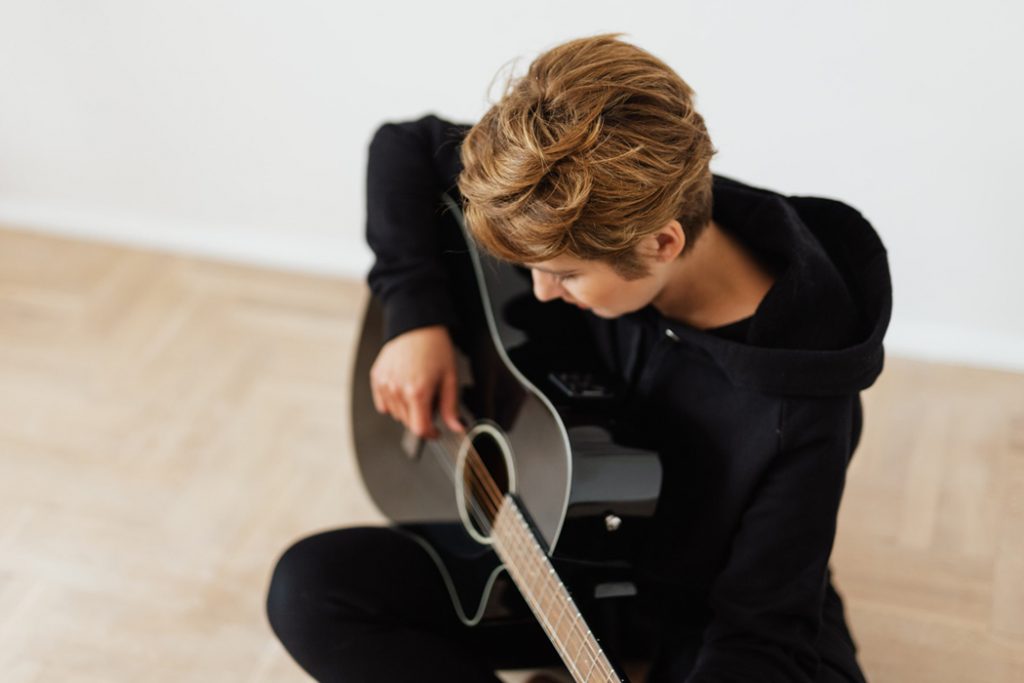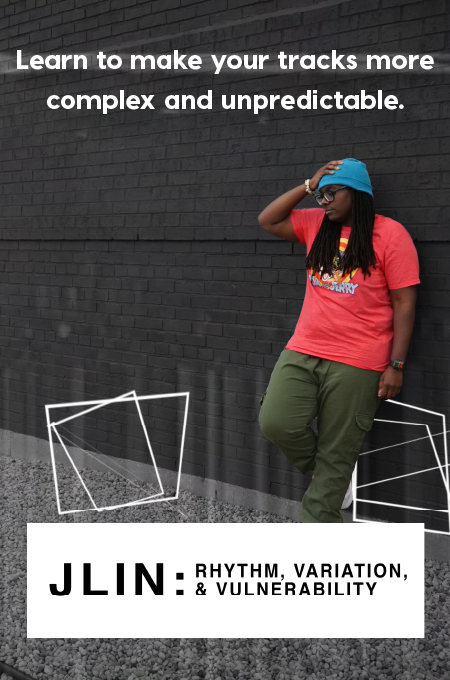
+ Improve your songwriting with Soundfly! Explore our range of courses on emotional chord progressions, basic songwriting technique, songwriting for producers, and many more. Subscribe for unlimited access here.
Songwriters are always looking for new sources of inspiration and new stories to tell. Sometimes we write songs based on personal experiences, points of view, and concepts. But sometimes these are not enough for coming up with a good song and we need to focus on our senses to extract some ideas. By using the mundane perceptions of our senses, we can actually generate really cool lyrics with a technique called object writing.
Object writing is a great tool to generate and extract great songwriting ideas using information from our senses. The technique was first identified and distilled by Berklee College of Music professor and songwriting expert Pat Pattison, who coined the term in his 1995 book, Writing Better Lyrics.
In our daily lives, we mostly stay floating at surface level, so to speak—in object writing, however, your job as a writer is “to master the art of diving,” as Pattison put it. We get to dive deep, get to the bottom of the sea, find the shell on the sea bottom, open it up and find the pearl inside. But what does this mean?
With constant daily overdoses of sensory information these days, our focus tends to get blurred and as songwriters we might find ourselves struggling to find good song ideas or inspiration. As a practice, object writing becomes helpful to resharpen our focus. Let’s look at how this works.
Getting Started with Senses
An object writing exercise is done by first picking an object and focusing all of our seven senses on its attributes. That’s right, seven. We have five main senses: sight, touch, hearing, taste and smell. Additionally, we have two more: organic sense and kinesthetic sense.
To get started, we will arbitrarily pick an object and focus on it with all five senses. Write out the five senses to the top of your paper in order to focus on them while you write out your observations. Your object writing needs to be a stream of consciousness process, so don’t stop and worry about having the right words or completed sentences at this stage.
I will pick “flower” as my object. Here’s an excerpt from my object writing exercise done in two minutes:
This flower is in front of me. It is pink and has a green neck. The flower is in a vase in front of me and I’m looking. I have headphones and the music surrounds the flower with all my senses. The water rises and the smell of the flowers comes to me. I feel that the green gets sharper as the light breaks. I can feel the water in my mouth and the coldness of it is touching my skin. I can feel that the sprouts are rising higher, growing and getting bigger, they are reaching to the blue skies. I can hear airplanes flying over my house. The flowers are rising. I can feel them rise.
+ Learn songwriting, theory, production, composition, arranging, mixing, and more — whenever you want and wherever you are. Subscribe for unlimited access!

The Five Senses
In my first object writing exercise, I talked about how I’m seeing the flower, and how the music in my headphones surrounds the flower (hearing). I also said “I can feel the water in my mouth (taste) and the water is touching my skin.” I also said “I can smell the flowers come to me.”
I just did this exercise in two minutes or so. I did not stop, I did not think too much and I did not worry about my sentence structure, grammar, or linear thought construction.
Lastly, I mentioned that there are two more senses, organic sense and kinesthetic sense — let’s look into these now.
The Other Two Senses
Organic sense is the somatic sense that originates from our body. Examples of the organic sense include: your heartbeat, pulse, muscle tension, stomach ache, cramps, breathing, and so on. Kinesthetic sense is the sense of relation between your feelings and the world around you, such as drowsiness, car sickness, etc.
So let’s do the “flower” exercise again, now using all seven senses, and see what we come up with:
There is the smell of the flower in the air. My roommate is eating a burger in front of me almost blocking the smell of the flower. The flower is still rising high to the sky and the sunshine falls on the flower from the window. I can almost feel that the taste of the flower sprouts in my mouth and then I also feel the cracking leaves blistering my fingers and the flowers grow bigger everyday. With the sound of the guitar in my ears, I can feel the rhythm of the flowers even louder. They move with the water below them and it makes me shake side by side. They talk to us, and we listen. They speed up and slow down, my heartbeat slows and speeds up every second I watch the flowers move. They are alive, and I feel the motion in my head. The flower moves fast and here I am stable, as the flowers runs up to the sky.
Did you notice how I used all seven senses in the excerpt above? This paragraph includes descriptors referencing smell, sight, taste, touch, hearing, and organic and kinesthetic sensation.
Notice the grammar errors of the excerpt above, and even typos! That’s how object writing should be. Don’t go back, always look ahead, focus on the seven senses and write. Later, when you revisit these pieces of writing to look for song lyric ideas, you can edit how they’re written out.
When to Use Object Writing
Object writing works best when done as a daily exercise in the morning. We wake up with fresh minds in the morning, cleansed from the sensory overload of the day before. Our minds are fresh, ready to focus and dive deep. Perhaps we still remember our dreams from the night before, as we just woke up.
So, try practicing object writing as the first thing in the morning. Stream of consciousness works even better in the morning since we are still sleepy. You will find how effective this exercise gets as you turn object writing into a morning routine.
Finding the Diamonds
Now it is time to go back and read everything you’ve written. Then maybe re-read it. Underline any sentences or phrases that you think are valuable, or could be a potential song idea.
I like to think of reading object writing passages like looking for diamonds in a bucket of sand. The pieces are there, but you must carefully peek inside to notice them. Look at how you used all seven senses to talk about the object, identify which sense is being talked about.
When you’re done identifying, copy the underlined or highlighted sections into a new page. This will help you detect any extracted “diamonds.” Then, you can work through them and see how you might start fleshing them out into a new song based on one of those ideas.
Final Thoughts
Just like many things in music, being a good songwriter takes time and craftiness. Object writing is an excellent method for developing your senses and your observational approach to writing songs.
If you turn object writing into a routine, in a few weeks you will start noticing the difference of how much your senses are being sharpened, along with your sense of identifying useful ideas and omitting useless ones. A small mundane observation can lead you to new stories and new perspectives. A great book to check out in a similar vein would be The Uncommon Life of Common Objects by Akiko Busch.
Good luck and hope you find some great ideas along the way!
Get 1:1 coaching on your songwriting from a seasoned pro.
Our community of mentors will help you set the right goals, pave the right path toward success, and stick to schedules and routines that you develop together, so you improve every step of the way. Tell us what you’re working on, and we’ll find the right mentor for you!




